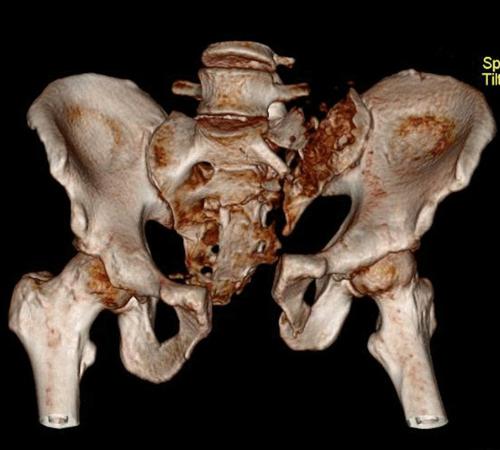European Spine Journal ( IF 2.6 ) Pub Date : 2022-08-14 , DOI: 10.1007/s00586-022-07330-8 S Romoli 1 , L Petrella 1 , Eleonora Becattini 1 , A Pisano 1 , G C Wembagher 1 , P De Biase 2

|
Purpose
The aim of our retrospective study is to analyze how spinopelvic dissociations (SPDs) were treated in a single center trying to better understand how to improve surgical and non-surgical options.
Methods
Twenty patients of a single center surgically treated for SPDs between 2013 and 2021 were retrospectively included in this study. Three surgical techniques have been used: modified triangular stabilization, triangular stabilization and double iliac screws stabilization. Follow-up was assessed for up to 11.6 ± 9.9 months through ODI, MRS, NRS, IIEF or FSFI, a CT scan and whole spine X-ray examination.
Results
Twenty patients were admitted to our ER for traumatic spinopelvic dissociation. Surgical treatment for spinopelvic dissociation has been performed on average 11.5 ± 6.7 days after the trauma event. Eighteen fractures were C3 type and two C2 types. Neurological examination showed nerve root injury (N2) in 5 patients, incomplete spinal cord injury (N3) in 4 patients and cauda equina syndrome in two patients (N4). In case of neurologic deficits, routinary nerve decompression was performed. Three different surgical techniques have been used: 8 triangular fixations (Group 1), 6 modified triangular stabilization (Group 2) and 6 double iliac screws triangular fixation (Group 3).
Conclusion
In patients with post-traumatic neurological deficit, decompression surgery and fracture reduction seem to be associated with clinical improvement; however, sexual disorders seem to be less responsive to the treatment. Some open stabilization techniques, such as the double iliac screw, could help in restoring the sagittal balance in case of severe deformities.
中文翻译:

治疗不稳定的脊柱骨盆骨折:三种手术技术的结果——回顾性单中心病例系列
目的
我们回顾性研究的目的是分析单个中心如何治疗脊柱骨盆分离症 (SPD),以更好地了解如何改善手术和非手术选择。
方法
本研究回顾性纳入了 2013 年至 2021 年期间接受 SPD 手术治疗的单中心 20 名患者。使用了三种手术技术:改进的三角稳定、三角稳定和双髂骨螺钉稳定。通过 ODI、MRS、NRS、IIEF 或 FSFI、CT 扫描和整个脊柱 X 射线检查评估随访长达 11.6 ± 9.9 个月。
结果
20 名患者因创伤性脊柱骨盆分离被送入我们的急诊室。脊柱骨盆分离的手术治疗平均在创伤事件发生后 11.5 ± 6.7 天进行。18 处骨折为 C3 型和 2 处 C2 型。神经系统检查示神经根损伤(N2)5例,脊髓不全损伤4例(N3),马尾神经综合征2例(N4)。在神经功能缺损的情况下,进行常规神经减压。使用了三种不同的手术技术:8 个三角固定(第 1 组)、6 个改良三角固定(第 2 组)和 6 个双髂骨螺钉三角固定(第 3 组)。
结论
对于有创伤后神经功能缺损的患者,减压手术和骨折复位似乎与临床改善有关;然而,性障碍似乎对治疗的反应较差。一些开放稳定技术,例如双髂骨螺钉,可以帮助在严重畸形的情况下恢复矢状位平衡。











































 京公网安备 11010802027423号
京公网安备 11010802027423号